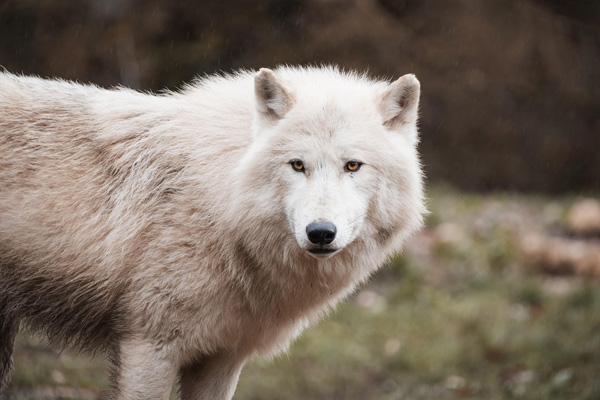Biotechnology company Colossal announces genetically engineered return of the dire wolf

[White wolf. Photo Credit to Pixabay]
On April 8, 2025, Texas-based tech startup Colossal Biosciences announced that it had brought back the dire wolf, a species long believed to have vanished more than 10,000 years ago.
The dire wolf is an extinct species of canine and gained popularity through its portrayal in the franchise “Game of Thrones.”
Two genetically modified “dire wolf” pups, christened Romulus and Remus, were born in October of 2024, with their sister Khaleesi following in late January, making them the first wolves with dire wolf characteristics in millennia.
The three pups were created using genetic information from a 13,000-year-old tooth found in Ohio and a 72,000-year-old skull discovered in Idaho.
Armed with these samples, the company first analyzed the genome, identifying 20 differences in 14 genes believed to be responsible for the dire wolf’s distinct characteristics, such as their wider heads, whiter coats, and unique howls.
They then harnessed CRISPR, a gene-editing technology, to edit existing grey wolves’ DNA to make them more similar to their extinct counterparts.
The nuclei of the cells, which contain the edited DNA, were then removed and transplanted into gray wolf egg cells, where they grew into embryos.
These embryos were inserted into domesticated female hounds, and, 65 days later, the pups were born.
But are Romulus, Remus, and Khaleesi real dire wolves? Opinions differ among experts.
According to paleontologist Dr. Nic Rawlence from the University of Otago, New Zealand, the ancient DNA extracted from thousands of years old fossils is too damaged to produce real biological clones.
Colossal has merely used the DNA to identify and edit parts of the grey wolves’ genome.
Concerns have inevitably arisen questioning the ethics and legitimacy of the pups’ existence.
"So what Colossal has produced is a grey wolf, but it has some dire wolf-like characteristics, like a larger skull and white fur," said Dr. Rawlence.
"It's a hybrid."
“Extinction is still forever," he added.
"If we don't have extinction, how are we going to learn from our mistakes?”
However, Beth Shapiro, Colossal’s chief science officer, argues that while creating something genetically identical to a dire wolf is “not really possible, it is also not really the goal…we want to create functional versions of extinct species. We don’t have to have something 100 percent genetically identical.”
Although the dire wolves may not be genetically identical to ancient dire wolves, their existence symbolizes an important scientific advancement.
“There is cool science here,” noted Jacquelyn Gill, paleoecologist at the University of Maine.
“I just wish it wasn’t getting lost in the hype.”
The technologies that Colossal used for the dire wolves can also be applied to help conserve a different species - the highly endangered red wolf.
Colossal developed a way of cloning animals using blood - specifically, endothelial progenitor cells, which will eventually become the lining of the blood vessels.
These cells are easier to work with and less invasive to obtain than the usual cells retrieved in a skin biopsy.
This technology can be used to help prevent species like the red wolf, a critically endangered species, from going extinct.
The company also discussed its ambitions to bring back the long-gone woolly mammoth in 2028 and save the nearly extinct pink pigeon.

- Yujin Shin / Grade 9
- Amador Valley High School

![THE HERALD STUDENT REPORTERS [US]](/assets/images/logo_student_us.png)
![THE HERALD STUDENT REPORTERS [Canada]](/assets/images/logo_student_ca.png)
